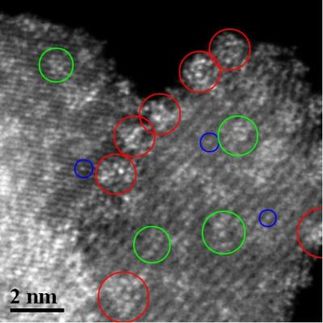Inspired by the chemistry of the eye: Research team develops innovative catalytic chemistry process
Nature can do it, and chemists in the lab often dream of doing it: producing substances simply and ecologically – as far as possible without any undesirable side-products. A team of researchers from Münster University has now succeeded in turning to its advantage a chemical reaction which takes place in the eye and enables us to see light and dark. This process, say the researchers, is of great interest for the chemical industry because it could be used to create special variants (isomers) of important carbon compounds which need a lot of energy to be produced by other means.
In the eye, the light-absorbing pigment rhodopsin plays an elementary role as a light sensor. When light enters the eye, rhodopsin triggers a chemical signal chain, thereby activating the photoreceptor cells. “We were inspired by this process,” says Jan Metternich, a doctoral student of chemistry who carried out the study together with Dr. Ryan Gilmour, Professor of Chemical Biology in the “Cells in Motion” Cluster of Excellence at Münster University.
One of the central components of the light-absorbing pigment rhodopsin is retinal (“Vitamin A”). To activate the photoreceptor cells, however, a very special variant of the retinal molecule is needed. As a result of light entering the eye, it is converted into a second, very similar form, thereby starting off the chemical signal chain. “Isomers” are what chemists call the different forms of a molecule.
“The selective formation of isomers is important not only for our ability to see, but also, for example, for the production of medicines, and agrochemicals,” says Ryan Gilmour. “Our innovative method has provided us with a simple way of selectively producing these valuable isomers that are needed for both academic and industrial chemistry.” The reaction is triggered by light – just as in the eye. The so-called catalyst which the reactions require – which increases the speed of the reaction – is a cheap and ecological molecule: riboflavin, a B vitamin which is also used, for example, as a food colour additive.
Original publication
Other news from the department science

Get the chemical industry in your inbox
By submitting this form you agree that LUMITOS AG will send you the newsletter(s) selected above by email. Your data will not be passed on to third parties. Your data will be stored and processed in accordance with our data protection regulations. LUMITOS may contact you by email for the purpose of advertising or market and opinion surveys. You can revoke your consent at any time without giving reasons to LUMITOS AG, Ernst-Augustin-Str. 2, 12489 Berlin, Germany or by e-mail at revoke@lumitos.com with effect for the future. In addition, each email contains a link to unsubscribe from the corresponding newsletter.




























































